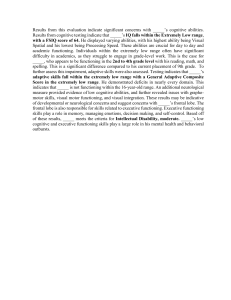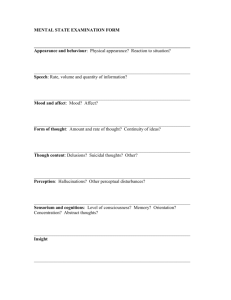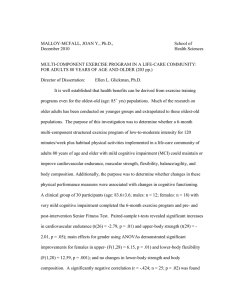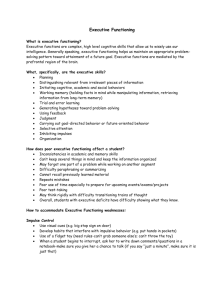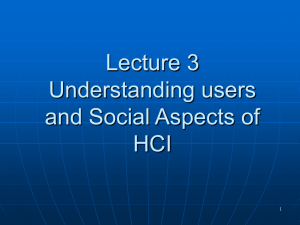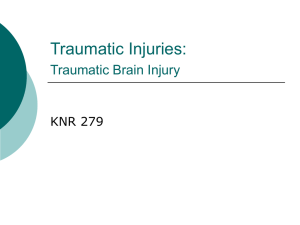PSY 3430 The Mental Status Exam The Mental Status Exam
advertisement
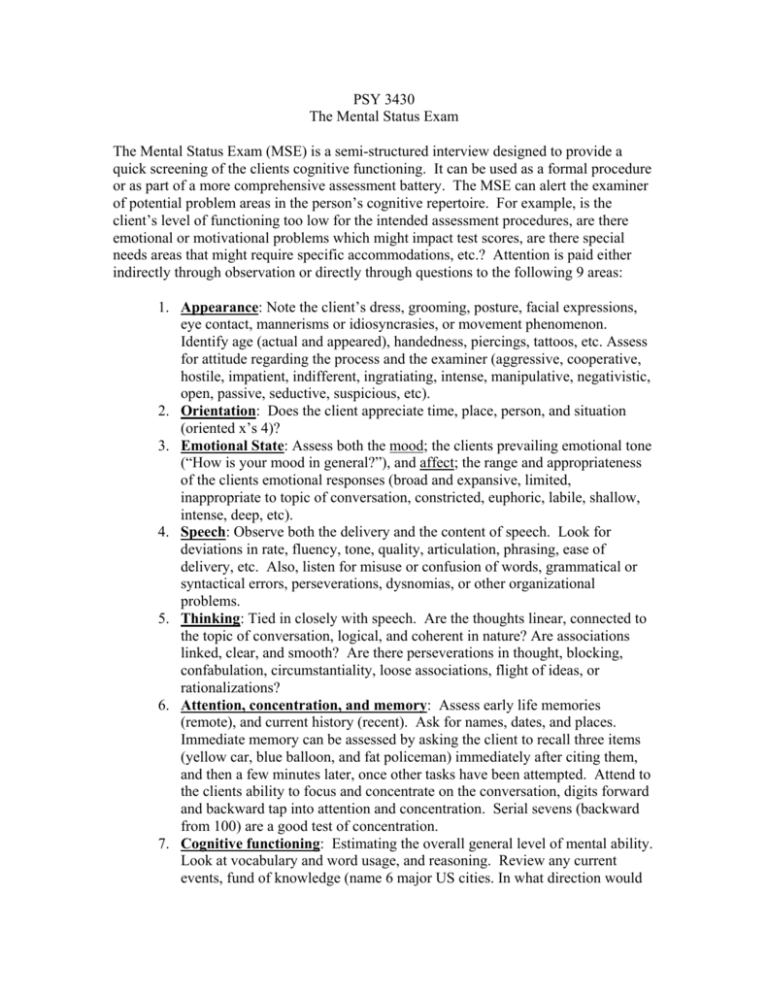
PSY 3430 The Mental Status Exam The Mental Status Exam (MSE) is a semi-structured interview designed to provide a quick screening of the clients cognitive functioning. It can be used as a formal procedure or as part of a more comprehensive assessment battery. The MSE can alert the examiner of potential problem areas in the person’s cognitive repertoire. For example, is the client’s level of functioning too low for the intended assessment procedures, are there emotional or motivational problems which might impact test scores, are there special needs areas that might require specific accommodations, etc.? Attention is paid either indirectly through observation or directly through questions to the following 9 areas: 1. Appearance: Note the client’s dress, grooming, posture, facial expressions, eye contact, mannerisms or idiosyncrasies, or movement phenomenon. Identify age (actual and appeared), handedness, piercings, tattoos, etc. Assess for attitude regarding the process and the examiner (aggressive, cooperative, hostile, impatient, indifferent, ingratiating, intense, manipulative, negativistic, open, passive, seductive, suspicious, etc). 2. Orientation: Does the client appreciate time, place, person, and situation (oriented x’s 4)? 3. Emotional State: Assess both the mood; the clients prevailing emotional tone (“How is your mood in general?”), and affect; the range and appropriateness of the clients emotional responses (broad and expansive, limited, inappropriate to topic of conversation, constricted, euphoric, labile, shallow, intense, deep, etc). 4. Speech: Observe both the delivery and the content of speech. Look for deviations in rate, fluency, tone, quality, articulation, phrasing, ease of delivery, etc. Also, listen for misuse or confusion of words, grammatical or syntactical errors, perseverations, dysnomias, or other organizational problems. 5. Thinking: Tied in closely with speech. Are the thoughts linear, connected to the topic of conversation, logical, and coherent in nature? Are associations linked, clear, and smooth? Are there perseverations in thought, blocking, confabulation, circumstantiality, loose associations, flight of ideas, or rationalizations? 6. Attention, concentration, and memory: Assess early life memories (remote), and current history (recent). Ask for names, dates, and places. Immediate memory can be assessed by asking the client to recall three items (yellow car, blue balloon, and fat policeman) immediately after citing them, and then a few minutes later, once other tasks have been attempted. Attend to the clients ability to focus and concentrate on the conversation, digits forward and backward tap into attention and concentration. Serial sevens (backward from 100) are a good test of concentration. 7. Cognitive functioning: Estimating the overall general level of mental ability. Look at vocabulary and word usage, and reasoning. Review any current events, fund of knowledge (name 6 major US cities. In what direction would you travel if you went from NYC to Rome? Who was president of the US during the Vietnam War? Which president freed the slaves?, what is Stevie Wonder’s profession?) working simple arithmetic problems, and abstract reasoning tasks, and concept understanding (proverbs, similarities, differences: How are a pencil and a typewriter alike? A bird in the hand is worth two in the bush means what? What would you do if you found a gun in the local park?). Also, when brain impairment is suspected, simple drawing and/or copying tasks can be revealing (copy a cube, draw a bicycle, draw a clock with hands at 4:20). Finally, obtain a brief sample of reading and comprehension (Close your eyes), and a brief sample of writing (My name is _______). 8. Special preoccupations and experiences: Look for report or expression of bodily concerns, distortions of self concept, obsessional tendencies, phobias, paranoid ideation, remorse or suicidal thought, delusion, hallucinations, strange experiences such as dissociations, fugue states, and feelings of impersonalizations or unreality. 9. Insight and judgment: Assess for the client’s self-understanding of their own condition, expectations they have for themselves, assess for insight into their strengths and weaknesses. Examine judgment processes. Sources: Lezak, 1995; Sommers-Flannigan, 1999


